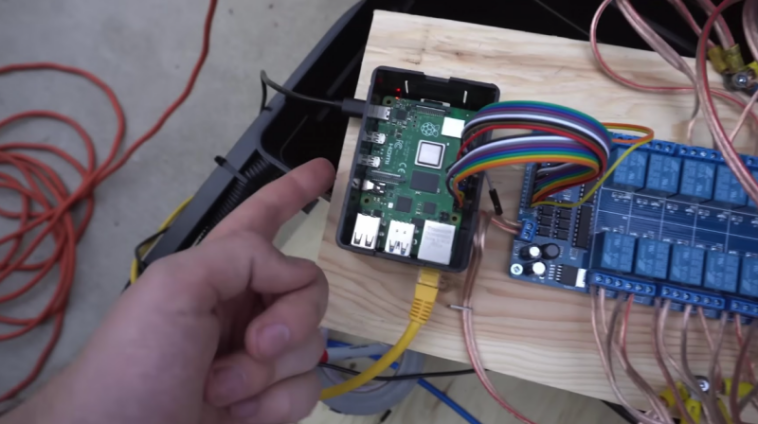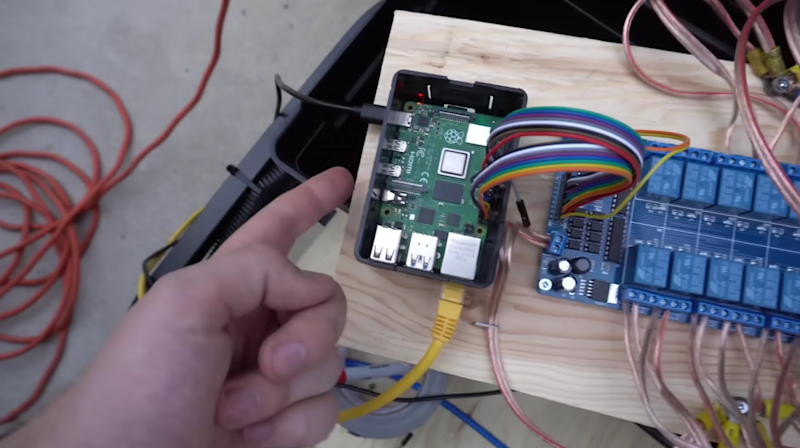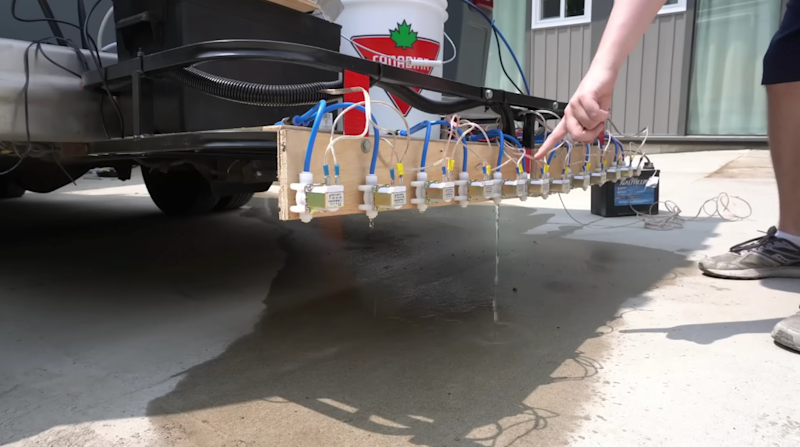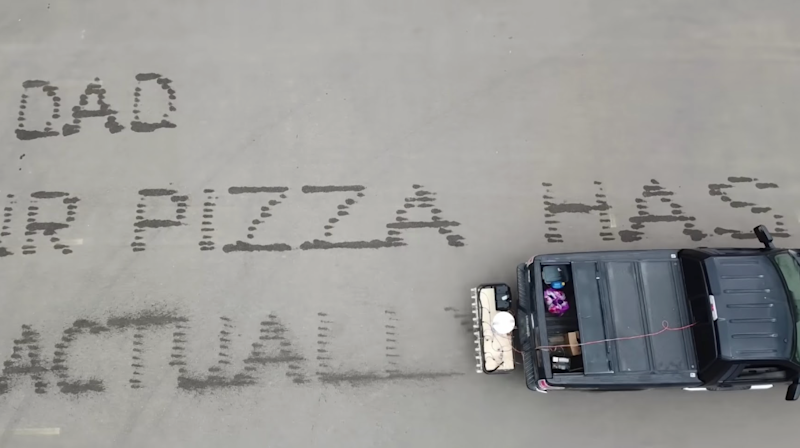An impermanent print
Armed with, amongst other things, some solenoid valves, wood to attach the valves to his truck, a good length of hosing, speaker wire, hose splitters, and a bilge pump, Ryder set to work.
“The ‘printer’ runs off 12 V direct from the car’s cigarette lighter,” he explains. “There’s a Raspberry Pi 4 that runs a web server that accepts input text, an input speed and font and, from that, turns the text into a picture and iterates over it left-to-right to create a bit of a map. From that map, it then determines which solenoid valve (1–12) to open or close, at a particular time.”
Raspberry Pi’s GPIO pins are used to open and close valves via a relay board to manage the higher voltage. It also controls a windshield washer pump that turns on just before printing and just after completion to pressurise the lines. The water is then pumped out of a large bucket, into the lines, and out through the solenoid valves onto the road.
Writing the required Python code himself, Ryder didn’t find it the most challenging part of the build. “Code is my talent; that part comes easy to me. Wiring, debugging wiring, and everything electrical on the other hand, I struggle with and it takes me a while.”
The solenoid valves are situated about 1.5 ft above the ground on a trailer hitch, but this height will vary depending on the vehicle. In terms of the amount of water utilised, Ryder says it’s “surprisingly efficient. I can usually write messages for about 10–15 minutes before it runs out.”
Interestingly, he claims that you can drive any speed, “as long as it’s a constant speed, and you input it into the web server before you drive. We tested it up to about 20 km/h, and I’m hoping to get the speed way up in version two.”
Truckloads of inspiration
Ryder describes this make as being of “moderate difficulty”, but would encourage anyone to have a go, “maybe trying a project with one pump and one solenoid (like a sprinkler).”
Looking to make new versions of the printer, he has ordered a considerably more powerful pump in the hope it will improve the aesthetic of the printing. “I’m even looking at doing colour in some way that I’ve yet to figure out – I don’t want to have to clean up a mess or leave anything behind.”
While feedback from the maker community has been wholeheartedly positive, some locals were a little bemused. “My neighbours have seen me doing a lot weirder projects, so they’re used to it, but I did get some weird looks from people on the street, as the machine itself – with its wires, hoses, and dripping water – looks a bit strange.”
Ryder confirms that we can expect more offbeat Raspberry Pi-linked projects from him, but “I’m keeping them secret until I actually build them.” Watch this space…





